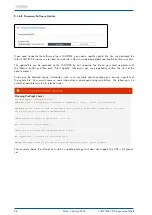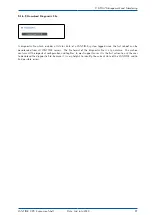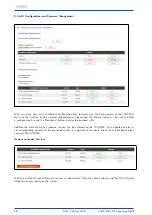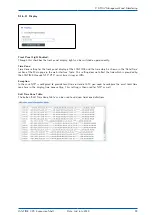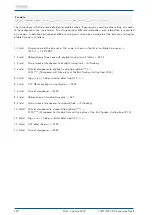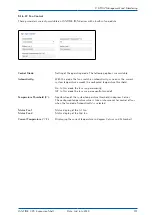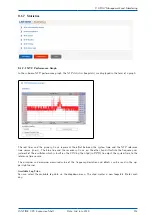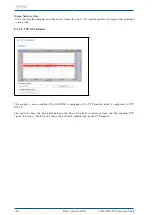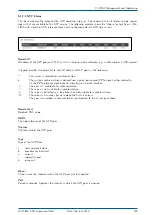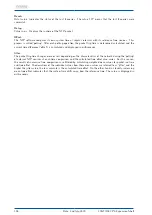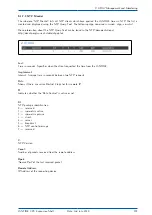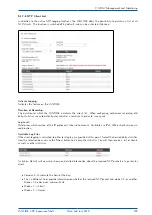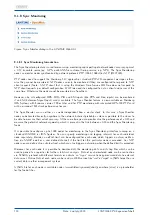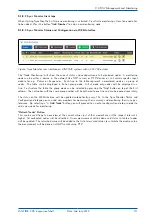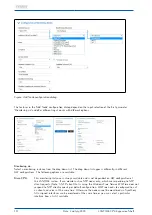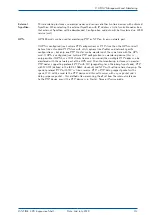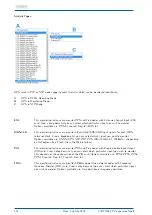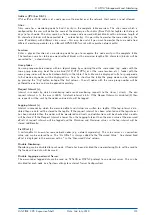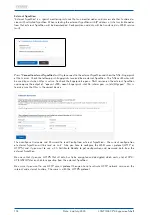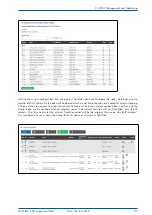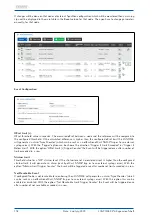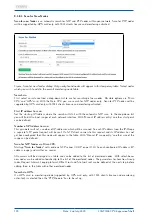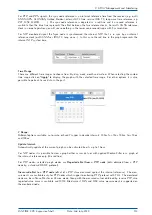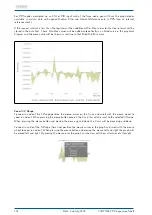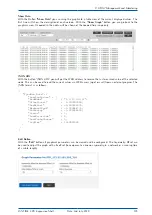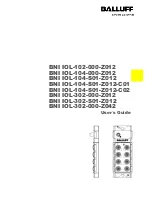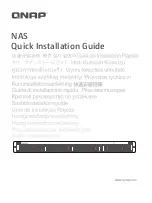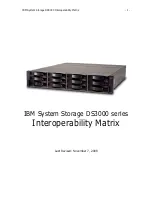
9.1.8 Sync Monitoring
Figure: Sync Monitor dialog in the LANTIME Web GUI.
9.1.8.1 Sync Monitoring Introduction
The Sync Monitoring feature is used for measuring, monitoring and reporting of network nodes’ accuracy against
a UTC traceable source (eg. GPS, multi-GNSS or national timing service, e.g. NPL). The Sync Monitoring
node can monitor nodes synchronized by network protocols PTP (IEEE 1588v2) or NTP (RFC1305).
PTP nodes need to support the Meinberg TLV approach or standard PTPv2 Management messages, other-
wise they cannot be monitored. NTP nodes can only be monitored if they are configured to respond to NTP
client requests (Note: A NTP client that is using the Windows Time Service W32Time does not respond to
NTP client requests per default configuration. W32Time needs to configured to act as client and server at the
same time. Otherwise the node cannot be monitored via SyncMon).
However, also all configured MRS, FDM, PIO and ESI inputs (like PPS and Freq inputs) can be monitored
if an ESI (Extension Signal Input) card is available. The Sync Monitor feature is now available on Meinberg
IMS Systems with firmware version 7.00 or later and for PTP monitoring with integrated HPS-100 PTP card
with a minimum 1024 client performance license.
The Sync Monitor can run either as a node independent from a master clock. In this case a Sync Monitor
node can be located basically anywhere in the network; but most probably as close as possible to the slaves to
be able to measure their actual accuracy. At the same time you can monitor also the performance of a GM and
measure the potential network asymmetry which is present in the link between a GM and the Sync Monitoring
Node.
It is possible to configure up to 1000 nodes for monitoring in the Sync Monitoring interface running on a
standard LANTIME or IMS System. You can specify monitoring and logging intervals for each individual
node separately. Besides, an offset limit can be configured for each node which triggers an alarm notifica-
tion (via SNMP, email or a user defined channel) if the limit for this particular node is exceeded. For NTP
nodes you can define also a stratum limit, which can also trigger an alarming when the defined limit is exceeded.
Moreover, for each node it is possible to download all the monitoring data and its log files which can be
used to generate a report or for further statistical analysis. Data of each monitored node can be sent online
via SYSLOG protocol with different formats or activate an “rsync” service to copy measured data to external
data server. Online Data of each node can be read via WEB service like
"curl"
or
"wget"
in JSON format to use
current data in other management systems.
A JSON file for each node is available under:
/www/htdocs/syncmon/[alias].json
where [alias] is a placeholder
for the Node-Alias.
110
Date: 2nd July 2020
LANTIME CPU Expansion Shelf
Summary of Contents for LCES
Page 2: ......

